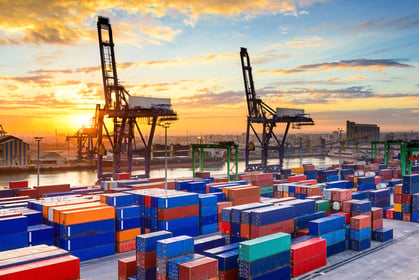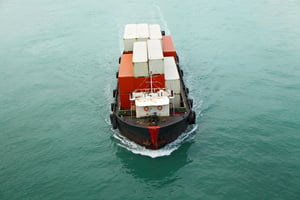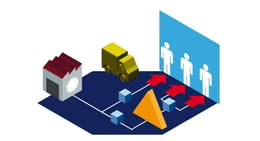Key Economic Indicators Are Changing
Martin Pahulje - July 20, 2021

As consumers, it is clear to see how interconnected the trio of logistics, supply chains, and freight transportation are. They have been woven into all parts of our lives, and we have grown dependent on them. This became evident during the pandemic's height when these industries were compromised, and we felt the effects. The COVID-19 pandemic changed how both businesses and consumers think and behave, and we have entered a "new normal" as a result. While the mentioned trio is at the forefront of our minds when we think of what the pandemic has changed, a lot changed behind the scenes too. Over the past year, we have faced significant challenges that drastically impacted deliveries, logistics, and more. Everything that occurred had a domino effect on the industry, and many key economic indicators that were previously relied on are facing changes too.
Economic indicators are used to predict future trends that will directly affect how businesses and consumers spend money. So for your organization to show resilience and stay on track as we bounce back from a hectic year, it is vital that you understand the changes these indicators are experiencing. So as our economy has changed over the past year, how have our indicators?
Before we get into the specific, it's crucial to understand how these indicators influence our economy. Essentially, indicators are split between two categories; the service industry and the industrial production industry. The first category encompasses banking, restaurants, retail, and similar companies, while the second focuses on manufacturing, oil, and gas. Currently, personal consumption accounts for 70% of GDP, while business and government spending account for the remaining 30%. Economic indicators provide a picture of what the economy looks like presently, in addition to what will likely occur in the short and long term. Utilizing these indicators will help companies determine logistics and supply chain needs as they set goals.
Industrial Production Industry
Freight Volumes
One key economic indicator of the production industry that was severely impacted by the pandemic was freight volumes. From January through May of the past year, the total U.S. rail intermodal volumes posted their highest numbers ever for that period. While the pandemic kick-started this dilemma, there were other contributing factors. The Suez Canal incident was catastrophic regarding the freight transport industry, putting operations to a halt and costing millions of dollars. Furthermore, other supply chain implications such as the semi-conductor shortage, port congestion, the heightened supply and demand imbalance in the truckload market, and rising freight rates created the perfect storm of damage to freight volumes.
posted their highest numbers ever for that period. While the pandemic kick-started this dilemma, there were other contributing factors. The Suez Canal incident was catastrophic regarding the freight transport industry, putting operations to a halt and costing millions of dollars. Furthermore, other supply chain implications such as the semi-conductor shortage, port congestion, the heightened supply and demand imbalance in the truckload market, and rising freight rates created the perfect storm of damage to freight volumes.
The Service Industry
Imports and Consumer Spending
Another significant example of the strong economic activity we are experiencing includes U.S. bound imports coming in with a 33.4% annual gain– it's best April reading ever. This is especially significant growth considering April of 2020 when most stores were closed due to the pandemic. As stores have begun to re-open, imports are coming in at an exceeding rate, and retail sales are booming as well. As the economy continues to open up, consumer spending is increasing at a steady pace. Unfortunately, retail inventories are struggling to catch up with demand as a result of supply chain challenges. These challenges include tight trucking capacity, port congestion, and an ongoing labor shortage.
In addition to the retail industry experiencing a recent boom, the services-based economy is seeing growth as well. As a result of so many individuals getting vaccinated, the services industry is hitting an all-time high, with the reading for the Service PMI report’s key indicator at 64. This is a 1.3% increase from April to May, and it is expected to continue growing at an even faster rate.
Impact on Logistics
Indicators such as these are instrumental in predicting changes that affect industrial production and the service industry with a high degree of accuracy. As experts in logistics and supply chain businesses, this information is critical and will help you make the best possible decisions for your organization. As  we recover from the COVID-19 pandemic, many aspects of the logistics industry are still struggling. One issue, in particular, being faced by trucking and logistics companies is the current labor shortage, specifically in drivers. There are many variables contributing to this shortage, including regulations, retirement of old drivers, and job conditions. On top of this, as consumer purchasing increases, the demand for deliveries is rising, and there are not enough to keep up. Drivers are expected to offer 24/7 availability to meet shipping demands, but that isn't feasible for individuals. As a result, data based upon key economic indicators suggests that this isn't going to be resolved anytime soon, so companies need to find an alternative solution.
we recover from the COVID-19 pandemic, many aspects of the logistics industry are still struggling. One issue, in particular, being faced by trucking and logistics companies is the current labor shortage, specifically in drivers. There are many variables contributing to this shortage, including regulations, retirement of old drivers, and job conditions. On top of this, as consumer purchasing increases, the demand for deliveries is rising, and there are not enough to keep up. Drivers are expected to offer 24/7 availability to meet shipping demands, but that isn't feasible for individuals. As a result, data based upon key economic indicators suggests that this isn't going to be resolved anytime soon, so companies need to find an alternative solution.
There are some potential solutions for these challenges in the works, such as on-demand trucking. This solution digitizes trucking, allowing for shippers to request trucks and drivers as needed, in addition to offering real-time pricing and mapping functions. On-demand tracking will efficiently match shippers with trucks, thus allowing both parties to match supply with demand. Companies utilizing the data from key economic factors can be aware of prominent challenges and find solutions before a problem becomes detrimental. For example, suppose you know that demand will increase based on the current economic outlook. In that case, you have time to build a strategy that enables additional hiring and equipment procurement as that need grows.
Beyond the current driver shortage, companies are facing many more challenges. Fortunately, using economic indicators, you can predict these dilemmas and determine how significant or long-lasting they may be. This information can then be used to help you make decisions regarding your operations to help you overcome and avoid such challenges. Logistics and supply chain analytics are all about looking ahead to make the best possible decisions - utilizing key economic indicators will help you achieve this.
Click below to download our guide on The Leaner Greener Challenge.
LATEST POSTS
- Understand Circular Economy in The Manufacturing Industry
- How Can Industry 4.0 IT Integration Be Achieved Smoothly?
- The Significance of Order Sequencing in Discrete Manufacturing
- How to improve your Supply Chain Management: The Power of Control Towers
- Optimizing Human Resource Scheduling in Manufacturing: A Technological Approach



